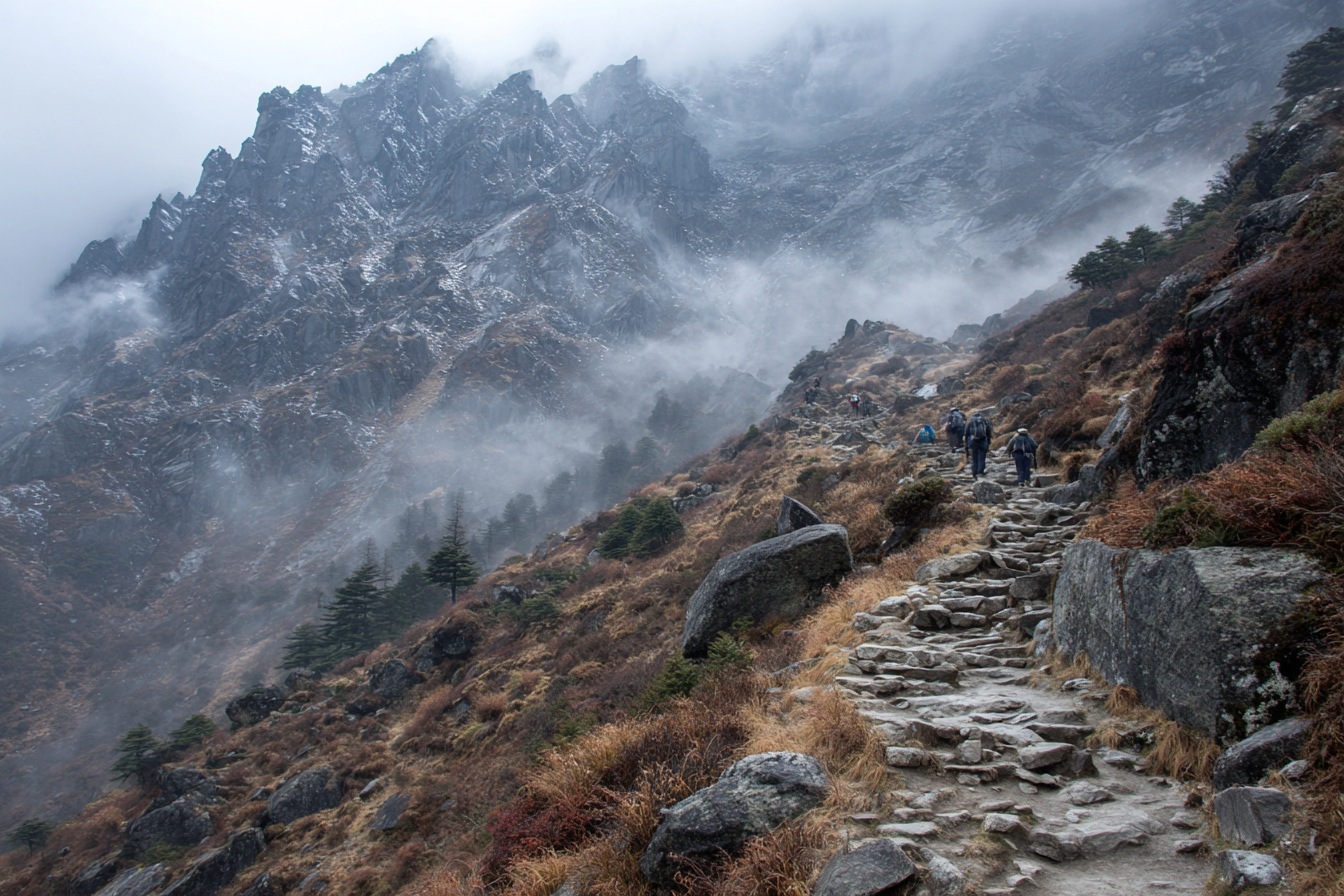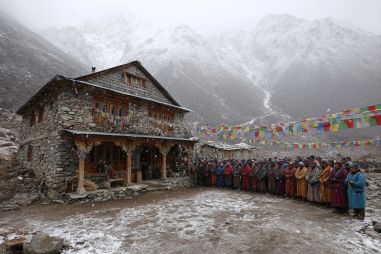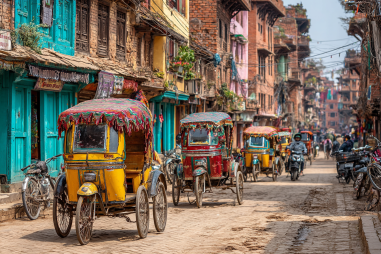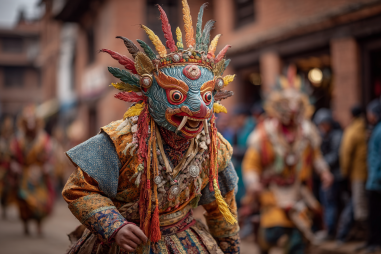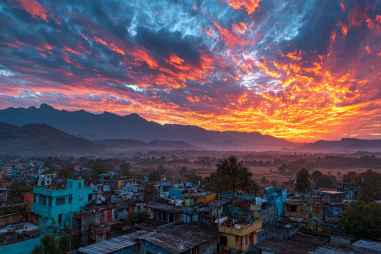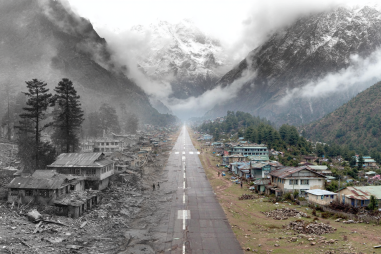Embarking on the Everest Base Camp (EBC) trek is a dream for many adventure seekers and outdoor enthusiasts. But amidst the breathtaking views and the promise of walking in the footsteps of legendary mountaineers, one common question arises: how difficult is the Everest Base Camp trek? Understanding the challenges of this iconic journey will help you prepare mentally and physically, ensuring a more enjoyable and safer experience. Let’s explore what makes the trek challenging, what to anticipate, and how to prepare for this unforgettable adventure.
Overview of Trek Difficulty and Terrain
The Everest Base Camp trek covers approximately 130 kilometers (about 80 miles) round trip, starting typically from Lukla, a small mountain town with a famously short runway. The trail takes you through rugged terrain, including steep ascents and long descents, uneven stone steps, rocky paths, and occasional muddy sections depending on weather conditions.
While the technical difficulty of the trail itself is generally moderate—no climbing or specialized skills are required—the physical demands arise mostly from the combination of distance, elevation, and the changing terrain. You’ll be walking for 6 to 8 hours most days, with rest days strategically inserted to help with acclimatization. The trail passes through Sherpa villages, rhododendron forests, suspension bridges, and glacial landscapes, each adding a unique aspect to the hiking experience.
Altitude Challenges and Acclimatization
The biggest factor influencing the trek’s difficulty is altitude. Starting at Lukla (2,860 meters or 9,383 feet), you will ascend to Everest Base Camp at 5,364 meters (17,598 feet). At high altitudes, the air contains less oxygen, which can lead to altitude sickness if your body doesn’t adapt properly. Symptoms can range from headaches and nausea to more severe, life-threatening conditions.
Proper acclimatization is essential. The trek is designed with gradual elevation gain in mind, with rest days at key points like Namche Bazaar (3,440 meters) and Dingboche (4,410 meters) to give your body time to adjust. Hydration, good nutrition, and listening to your body’s signals are crucial while adjusting to thinner air. Many trekkers also consider medications like acetazolamide to help prevent altitude sickness, but it’s wise to consult a healthcare professional before use.
Physical Fitness Requirements
The Everest Base Camp trek isn’t a casual stroll—it requires a solid level of physical fitness, though you don’t need to be an elite athlete. Cardiovascular endurance, good leg strength, and overall stamina will serve you well. If you engage in regular exercise such as hiking, running, cycling, or swimming, you already have a strong foundation.
Preparing before the trip can make a big difference. Training programs often include:
- Cardio workouts: brisk walking, jogging, or stair climbing to build endurance
- Strength training: focusing on legs, core, and back muscles to handle carrying a daypack and the physical demands of trekking
- Flexibility and balance exercises: yoga or stretching to reduce injury risk and improve agility on uneven terrain
Ultimately, the more you prepare, the more comfortable and confident you’ll feel during the trek.
Mental Preparation for Long Days and Isolation
Trekking to Everest Base Camp is as much a mental challenge as it is physical. You’ll spend many hours walking each day on a demanding trail, often with few distractions. The remote environment means accommodation and food options are basic—luxury is generally absent—requiring patience and adaptability.
Additionally, moments of solitude or feeling isolated can occur, especially on less crowded sections of the trail. Mental toughness, resilience, and a positive mindset can help you manage the long days, changing weather, and the mental fatigue that comes with high-altitude trekking.
Visualization techniques, setting small daily goals, and practicing mindfulness or meditation can support mental endurance. It’s also beneficial to foster camaraderie with fellow trekkers, share stories, and celebrate milestones together to keep spirits high.
Comparing Everest Base Camp to Other High-Altitude Treks
How does Everest Base Camp stack up against other famous high-altitude treks? In terms of altitude, EBC is one of the higher trekking routes, with many paths in the Annapurna region sitting slightly lower in elevation. The classic Annapurna Circuit, for example, crosses the Thorong La pass at 5,416 meters, but the trekking distances and terrain differ.
In terms of difficulty, EBC is often viewed as moderately challenging, primarily because it requires multiple days of sustained trekking and acclimatization at high altitudes. In comparison, treks like the trekking routes to Manaslu Base Camp or Cho La pass are considered more technically difficult or remote.
Overall, if you have some hiking experience and adequate fitness, the Everest Base Camp trek is achievable for many people who are prepared and acclimatize properly.
Tips for Overcoming Common Trekking Difficulties
While the trek poses certain difficulties, there are ways to overcome them:
- Altitude sickness: Ascend slowly, stay well-hydrated, eat regularly, and listen to your body. Never ignore symptoms and be willing to descend if necessary.
- Fatigue: Take it easy on the first day, don’t rush, and get plenty of rest.
- Cold weather: Layer your clothing, invest in a quality down jacket, and keep extremities warm with gloves and hats.
- Blisters and foot pain: Wear well-broken-in hiking boots, use good-quality socks, and carry blister treatment supplies.
- Nutrition: Choose high-energy foods and snacks and aim for frequent small meals to maintain energy levels.
When to Consider Hiring Guides or Porters
While many trekkers undertake Everest Base Camp independently, hiring a guide or porter can significantly enhance your experience and ease the physical burden. Guides bring invaluable knowledge of the trail, assist with language barriers, navigate logistics, and help identify health issues early.
Porters carry heavy backpacks and equipment, allowing you to hike more comfortably and conserve energy for the trek itself. This can be especially valuable if you’re not used to hiking with heavy loads or want to focus on acclimatization and mental readiness.
Hiring support is highly recommended for first-timers, those with limited trekking experience, or anyone who prefers a safer and more guided journey. Local trekking companies provide professional, experienced personnel who ensure your trip runs smoothly.
Readying Yourself for the Challenge
Is the Everest Base Camp trek difficult? Yes, it presents considerable challenges in altitude, distance, and terrain. But with smart preparation, appropriate fitness training, mental readiness, and respect for the mountain’s demands, it is very achievable for many outdoor enthusiasts.
Assess your health and fitness honestly, build a solid training routine, plan for proper acclimatization, and consider support to lighten your load. Approach the trek with patience and flexibility, and you’ll stand on the threshold of one of the most iconic and rewarding trekking experiences on the planet. The breathtaking views and unique cultural encounters are well worth the effort—and the memories will last a lifetime.

